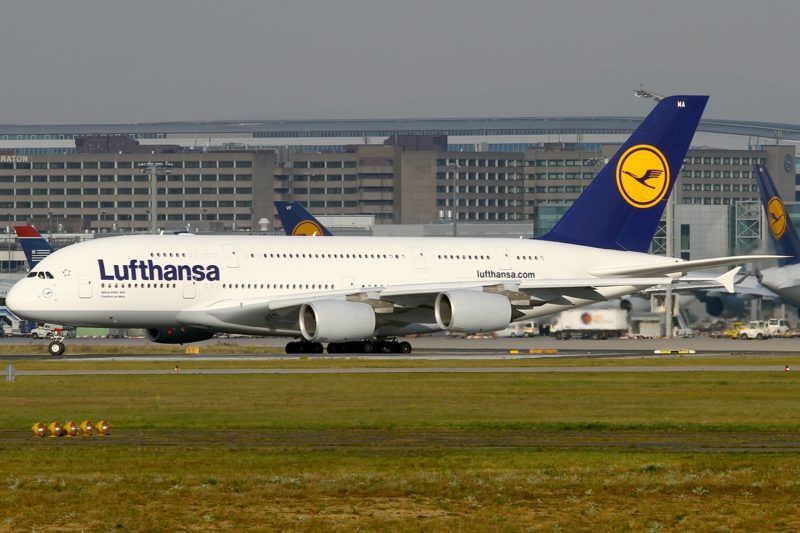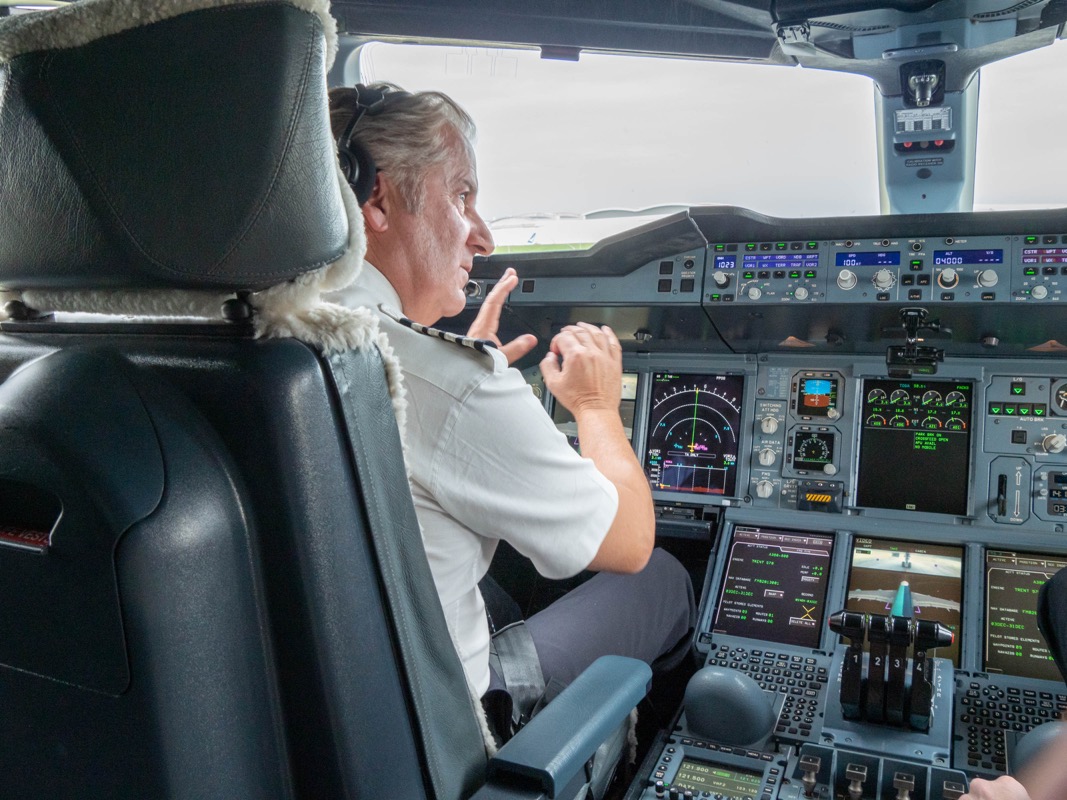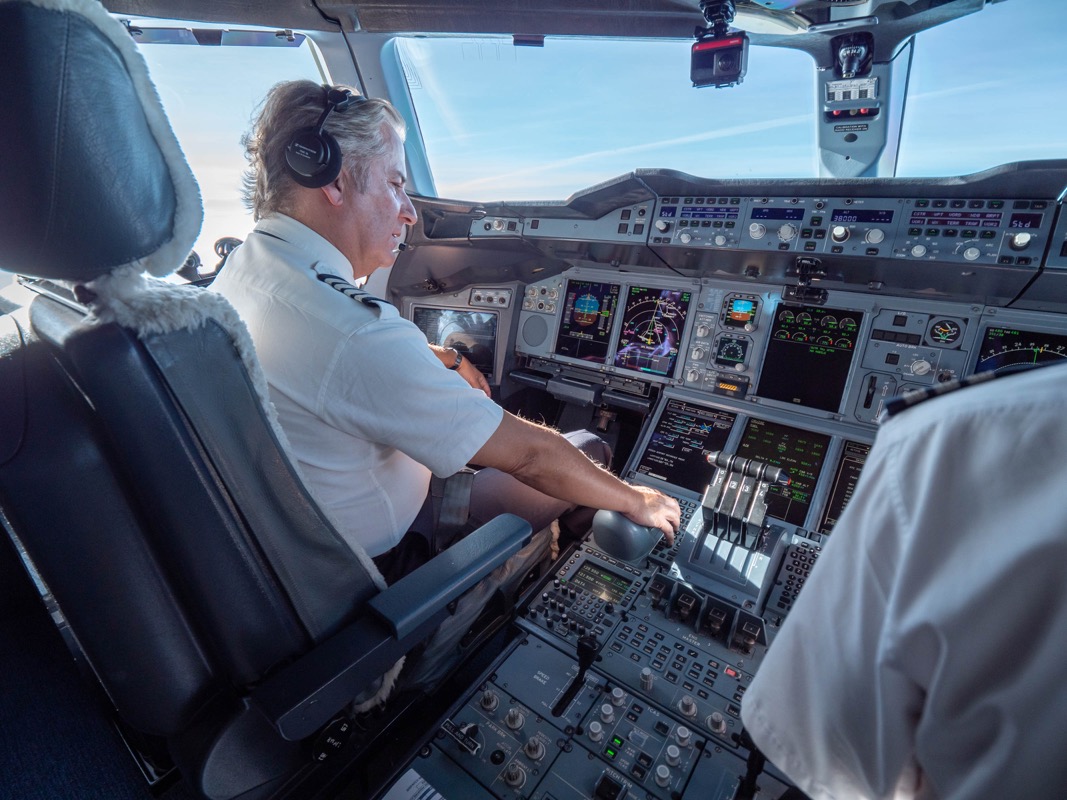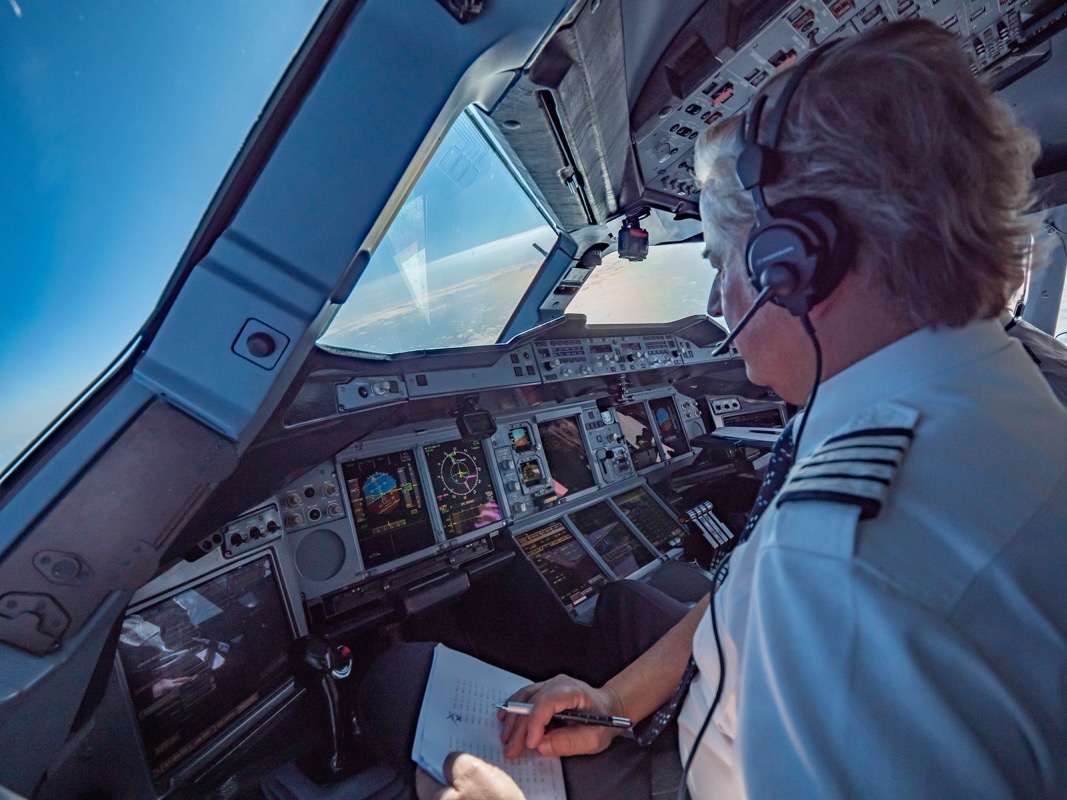The Airbus A380 is the biggest airliner in the world and must surely represent the pinnacle of a pilot’s flying career? This was one of the questions I posed to Lufthansa’s two A380 chief training captains, Richard Lenz and Geert Pruess. “Absolutely!” they replied simultaneously, at the beginning of an exclusive interview I did with them back in 2018.
All Lufthansa pilots start on short-haul sectors, which since the retirement of the last of the airline’s Boeing 737s in 2016, means flying the Airbus A320 series. Given the high cost of training a pilot on new hardware, Lufthansa pilots change type only once as a co-pilot and once as a captain in their career. That transition usually involves graduating from short haul A320 fleet to the long haul fleet to fly either the Airbus A330/A340, the Boeing 747-400/-8i, or the Airbus A380.
The carrier’s A380 fleet comprises 14 aircraft (albeit at least half will not be reactivated after the Coronavirus shutdown), which requires a pool of appropriately 380 pilots. As most sectors are long haul, they are operated by a captain and two first officers, to allow rest periods during the flight; therefore, the A380 pilot group is made up of around one-third captains and two-thirds first officers.
Half of those first officers are ranked as Senior First Officers and are designated as the acting pilot-in-command (PIC) while the captain is in the bunk for crew rest. Even the most junior pilot is expected to be able to operate and land the aircraft solo in the event of crew incapacitation. Training for the rank of Senior First Officer includes additional duties.

Common Cockpit of Airbus
One of the signature achievements of Airbus is a common cockpit across the entire product range and using fly-by-wire technology to artificially iron out differences to give similar handling characteristics. This means pilots of all Airbus airliners from the A318 to A380, which are considered different types with different type-ratings, can fly them using Crew Cross Qualification (CCQ). Only a Differences course is required for a pilot to transition to a new variant, which in some cases can be just three days.

Any pilot who has flown an Airbus before will find themselves at home in the A380 cockpit. Traditionally the first step in learning to fly a new type would be in a procedural trainer, which dispenses with motion and visuals as an unnecessary expense and enables students to focus on the location of switches and buttons and their function inside the cockpit, and to learn the procedures and flows. Furthermore, on more modern types, a large amount of time is spent learning to navigate the flight management system (FMS) computers and their complex network of menus and functions.
Lufthansa A380 Pilot Course
However, at Lufthansa, so many pilots transition from other Airbus variants that these stages are unnecessary and the carrier operates just one Thales full-motion six-axis A380 simulator, located at the airline’s wholly-owned training subsidiary in Frankfurt. The simulator is a Class D, ‘Zero Time’ machine, so-called because pilots are not required to fly any hours in the real aircraft to obtain a type-rating and be ready to fly with passengers aboard in normal line operations.
The syllabus has been created in tandem with Airbus and the German aviation authorities. After the equivalent of five days of self-study, there are two to three days of classroom instruction, covering aircraft systems, performance and operations. This is followed by sessions in the high-pressure environment of the simulator.

Each session lasts four hours and a typical pilot will be in the sim for four sessions to learn the skills required for his/her Basic Type Training (BTT). Further training is then conducted for Advanced Type Training (ATT), followed by three sessions for Line Oriented Flight Training (LOFT), which aims to recreate real-life airline operations. Finally, there is an additional session to complete the course and be signed off to Zero Flight Time Training (ZFTT) level.
Lenz and Pruess were full of praise for the realism of the simulator, saying they could not tell the difference between the sim and the real aircraft. Lenz said: “The evolution that has taken place with the development of aircraft has been mirrored in simulation technology. Handling, motion, systems replication and visuals are all state-of-the-art.”
Pilots without any Airbus experience have an extra classroom day and two extra sessions in the simulator, mostly to learn the Airbus philosophy. This includes the computerised attenuation of control inputs that will stop the aircraft from exceeding the flight envelope. This system offers protection if a pilot inadvertently stalls the aircraft or banks it beyond a certain roll angle.

A380 Operation Details
The maximum take-off weight for the A380s Lufthansa operates is 575 tonnes (and 394 tonnes for landing), including 509 passengers and 22 cabin crew. However, this enormous weight cannot be sensed, even when hand-flying the aircraft. “The A380 is extremely precise and incredibly agile,” said Lenz. The gigantic control surfaces on the wings and tail and the highly evolved fly-by-wire technology mean the A380 moves like a much smaller aircraft, and its mass is never apparent through the controls. The enormous wing – oversized to be future-proof for a once-possible stretched variant of the aircraft – results in a low wing loading compared with smaller machines such as the A321. In turn, this ensures the type has favourable handling characteristics and a relatively sedate landing speed, which is actually slower than the 747.
The A380’s main gear has 20 wheels on four trucks – inners have six wheels each, outers have four each – which spreads the weight and the energy needed to decelerate. Therefore, despite the weight and resultant momentum after touchdown, the A380 can stop on quite short runways, so Lufthansa crew are able to accept arrivals on the shortest runways at Houston Intercontinental (9,000ft/2,743m) and Los Angeles International (8,926ft/2,721m).
A system called Brake To Vacate controls the auto brakes after touchdown. It is programmed ahead of time with the taxiway turnoff that is desired, and will then apply smooth and uniform braking to bring the aircraft down to a walking pace by the time it reaches that exit. This gives passengers a gentle end to their flight without the need for sudden high-energy braking. It also reduces brake temperatures and cooling times, which can mean a shorter turnaround.
Ground handling and other operational aspects of a large aircraft like the A380 comprise a sizeable chunk of the training program. First, the large number of passengers aboard increases the chance a flight will require a medical diversion. Therefore, the importance of communications between the cabin and the flight deck, and between the aircraft and medical professionals on the ground, are emphasized.

This is important for a number of reasons – a medical diversion is expensive in terms of extra fuel and handling fees and also disruptive to operations as it means a late arrival at the final destination with inconvenienced passengers. At worst, it can result in a stranded aircraft and the need for hundreds of hotel rooms for passengers and aircrew. The A380 has specific issues with diversions. Aircraft are categorised according to their ground-handling requirements. The A380 is in a category shared only with the 747, known as Code F, characterised by a wingspan of more than 196ft 8in (60m) and a span between the outer main gear wheels of over 45ft 11in (14m). While gradually increasing, the number of Code F airfields globally is still limited. Lower-category airfields can accept an A380 in a true emergency, but important elements of the ground operation may be missing, such as taxiway width, parking space, de-icing capability, fuel availability, and steps high enough to reach the A380’s doors. In some cases, the size of the A380, especially its wingspan, means the presence of an A380 might close the airport.
With these factors in mind, a diversion has to be carefully planned in partnership with the team back in Frankfurt and, depending on the severity of the emergency, the diversion airfield has to be chosen with extreme care. The scale of the A380 operation, therefore, makes the captain not just a handling pilot but also a manager.
The job of a Type Rating Instructor (TRI) is to train pilots in the simulator and on the aircraft. A training sortie in a real A380 is required to qualify as a TRI. The A380 is flown to an airfield to perform circuits and touch-and-go landings. Additionally, an extra pilot rides in the observer’s jump-seat to monitor the overall operation of the flight. A quiet airfield is required for circuit training so as not to obstruct regular traffic due to the size of the A380. Airports that have been used for A380 training are Leipzig/Halle and Karlsruhe/Baden-Baden, the choice depending on weather and airfield activity on the day. Five circuits are usually required to release a TRI to the line. The fledgling TRI usually flies from the right (co-pilot) seat with either Lenz or Pruess in the left (captain’s) seat. This is because once a TRI is qualified, they will fly in the right-hand seat when reviewing a potential captain (command conversion normally requires 12 line sectors with a TRI in the right seat).

Lufthansa’s A380s flew to fewer destinations than any other type in the fleet (Beijing, Delhi, Hong Kong, Houston, Los Angeles, Miami, New York/JFK, San Francisco, Seoul, Shanghai and Singapore, all non-stop from the airline’s Frankfurt base). One could assume this lack of variety would deter pilots from wanting to join the fleet. On the contrary, pilots are queuing up to do so, and the destinations, while relatively limited compared with the range of places A330s or 747s fly, are all attractive. The carrying capacity of the A380 means new routes are not easily changed, and seats are sold up to a year in advance. This gives stability to a pilot’s roster and helps achieve a favourable work-life balance.
So, what advice would Lufthansa’s two chief training captains offer a pilot about to start training on the A380? “Don’t try to compare. At the end of the day, it’s just an aeroplane. Fly it as you would any other. The flight instruments are still the same; no matter how advanced the technology may be behind the panel, or how big the aeroplane is behind you. Pitch and power equal performance, and take care of the speed.”
That normal flight rules apply to such a monumental aircraft might be its designers’ and engineers’ greatest achievement.

Cover image: Hi Fly A380 with Captain Carlos Mirpuri




